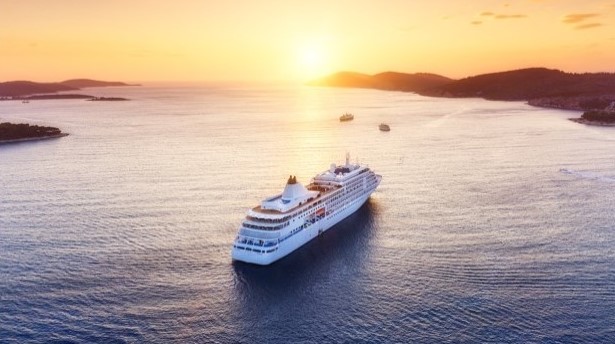Cruise Lines International Association (CLIA) released the 2021 State of the Cruise Industry Outlook report highlighting the industry’s global economic impact, and trend forecasts.
Despite a challenging year in 2020, research reveals optimism on the horizon with two out of three cruisers willing to cruise within a year and 58% of international vacationers likely to cruise in the next few years.
The State of the Cruise Industry report includes the 2019 Global Economic Impact Analysis highlighting the tremendous growth of the cruise industry and the corresponding contributions to the international economy before the global health emergency. In 2019, cruising sustained 1,166,000 jobs equaling $50.53 billion in wages and salaries and $154.5 billion total output worldwide in 2019. The analysis also found:
- Passenger Port City Spending: Passengers spent $385 in port cities before boarding a cruise and spend $100 in each visiting port destination during a cruise.
- Global Passengers – Most Cruisers from North America: The cruise industry hosted a total of 29.7 million passengers worldwide in 2019. North America accounts for the highest rate of cruisers with 15.4 million passengers cruising in 2019.
- Jobs Impact from Covid-19 Suspension: In 2020, every 1% loss of cruisers resulted in a reduction of 9,100 industry-related jobs. Each day of the suspension, caused direct and indirect industry losses of 2,500 jobs.
New Cruise Protocols
CLIA Cruise Lines anticipates the debut of 16 new ocean ships in 2021, resulting in a total of 270 CLIA Cruise Line ocean ships projected to be in operation by the end of 2021.
The “Fleet of the Future” will feature better health and safety cruise protocols for the resumption of passenger operations designed to help protect passengers, crew and destinations.
- Successful Sailings: From early July through mid-December 2020, there were more than 200 sailings with multiple layers of enhanced measures in place. The success of these initial sailings demonstrates new protocols are working as designed – to mitigate the risk of COVID-19 among passengers, crew and the destinations cruise ships visit.
- New Cruise Protocols: Some of the new protocols include crew and passenger COVID-19 testing before embarkation, mask wearing, physical distancing, air management and ventilation strategies as well as enhanced medical capabilities.
Responsible Tourism
The report highlights the industry’s $23.5 billion investment in ships with new technologies and cleaner fuels to reduce carbon emissions.
It also reveals partnerships with local governments in key destinations, and a commitment to reducing its rate of carbon emissions by 40% by 2030 compared to 2008:
- Liquified Natural Gas (LNG): 49% of new build capacity on order will rely on LNG fuel for primary propulsion.
- Exhaust Gas Cleaning Systems (ECGS):More than 69% of global capacity currently utilizes EGCS, while 96% of non-LNG new-builds will have EGCS.
- Advanced Wastewater Treatment Systems: 99% of new ships on order will have these systems in place, bringing global capacity served by these systems to 78.5%.
- Shore Side Electricity: 58% of new build capacity is committed SSE compatibility with 32% of global fleet capacity already capable of SSE and 25% of existing capacity will be retrofitted to use SSE.
2020 was a year unlike any other and I am proud of how our industry has united together to weather this unparalleled pandemic. As we look to 2021, I know that cruisers are eager to set sail once more, just as our industry is eager to put people back to work and create unforgettable experiences for our valued guests
stated Adam Goldstein, CLIA Chairman.































































